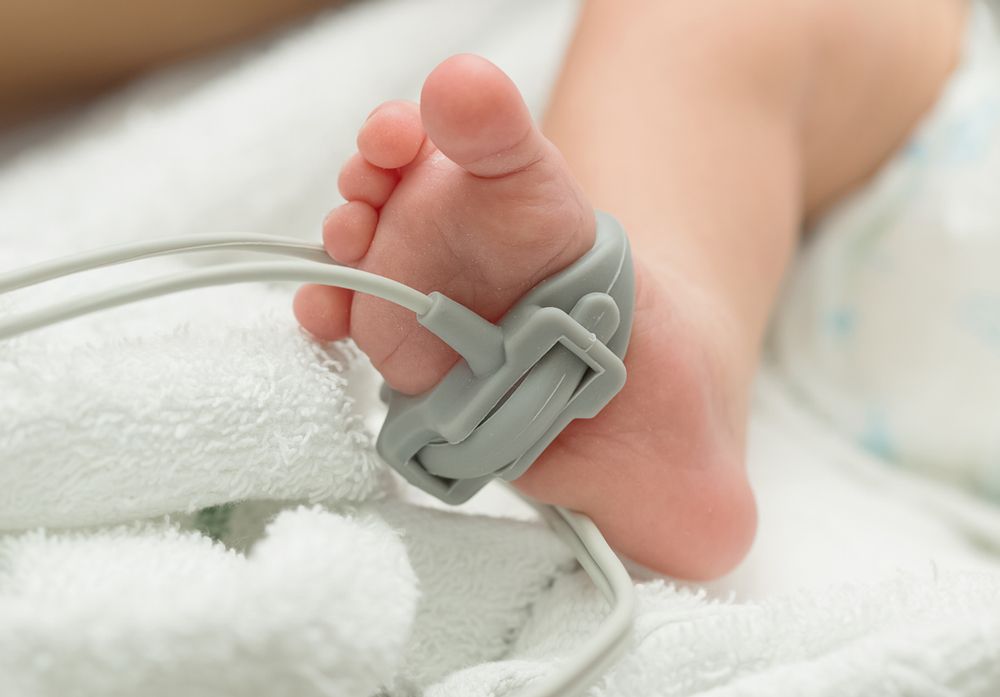There are a couple of reasons I want to write about congenital (meaning present at birth) heart defects in this series. One is to suggest what the hell to do if you’re told your baby has one, and the second is to tell you what to watch out for once your baby is born in case it was missed.
Everybody knows that hearts are pretty important – hence the inevitable freak out if you’re told in an ultrasound that your baby might have a defect in theirs.
Heart abnormalities are among the most common form of birth defects – more than 32,000 infants are born with them every year (1 out of every 125 to 150). Some of them won’t be apparent for many years, while others are a problem right off the bat and need medical attention immediately.
The good news is that almost all heart defects can be treated with today’s medical advancements.
Phew, good.
If your baby is diagnosed with a heart defect (often at your 20-week ultrasound), the advice I was given was to get a referral to the best cardiologist you can find before the baby is born. Then make sure the cardiologist and the pediatrician you choose can (and will) communicate with each other. Pretty obvious – although, I am constantly floored at how many professionals won’t play nicely in the sandbox even when a child’s health is in question (but that’s a soapbox I’ll drag out on another day).
Then do your homework and get familiar with your child’s condition so you can make informed decisions. (Check.)
Most importantly, get ready to look and feel like an idiot. I should mention that this goes for all facets of parenthood (see chart here). If you ask questions and you’re met with rolled eyes and an exhale, just remember that there is nobody on the planet that cares more about what happens to your kid than you, so you need to know what the ‘sitch is. You will look stupid and you will often look like a deranged honey badger so just accept it and move on.

Whether you child has, or has not, been diagnosed with a heart defect, here are some of the symptoms to tuck in your back pocket to watch out for:
INFANTS:
- Tires easily during feeding (i.e. falls asleep before feeding finishes)
- Sweating around the head, especially during feeding
- Fast breathing when at rest or sleeping
- Pale or bluish skin color
- Poor weight gain
- Sleeps a lot – not playful or curious for any length of time
- Puffy face, hands, and/or feet
- Prolonged or unexplained fever
- Often irritable, difficult to console
KIDS:
- Gets out of breath during play
- Difficulty “keeping up” with playmates
- Tires easily/sleeps a lot
- Change in color during active play or sports
(looks pale or has a bluish tint around mouth and nose) - Frequent colds and respiratory illnesses
- Slow growth and weight gain/poor appetite
- Complains of chest pain and/or heart pounding
Now, I know you see the problem here.
These symptoms are pretty typical on any given day with any given kid (aside from turning blue) so don’t go off the deep end like my friend’s daughter does anytime things get scary and pull your sundress up around your head while making a “IYEEEEEEE” sound like a bomb siren.
If your child has two or more of these symptoms, talk to your pediatrician about it being a possibility and they may give you a referral to a Pediatric Cardiologist. This isn’t a slam on doctors either, if you are coming in worried about a fussy baby that isn’t eating well, then colic, protein allergy and reflux may be the first issues they’ll rule out before they start alarming you with heart talk, so if you are noticing some of the other stuff, pipe up, my honey badger.
“Why in the hell don’t they test these kids for congenital heart defects before they leave the hospital?!” you ask. Well, they do in some places.
It’s called a pulse oximetry screen (or a pulse ox) where sensors are placed on the baby’s skin to determine the amount of oxygen in the blood and pulse rate. The test is painless and takes only a few minutes and is done when a baby is 24 to 48 hours of age, and all hospitals have this equipment (from what I can tell – if you know for sure let me know because I had trouble finding that online).
Not all hospitals do the screening so you may need to ask for it, although, many states and provinces are adding it to their newborn screening routine which is great considering it’s a non-invasive test, that is relatively cheap, easy to do, and it can throw a red flag up on something that can have a devastating impact on someone’s life if left unchecked.
Even though a pulse ox isn’t foolproof, they can detect up to seven possible critical congenital heart defects. If you are feeling especially bold, ask for four limb blood pressures on your baby as well, because it can often catch some of the flags that the pulse ox could miss.
Can you still hear me or are you too far out on the ledge of fear? I SAID ARE YOU TOO FAR OUT ON THE LEDGE OF FEAR TO HEAR ME?!
Okay, congenital heart defects are still relatively rare so it’s unlikely your baby will have one, but I wanted to do this post because I keep reading these heartbreaking stories about families that slipped through the cracks because the heart defect that their child had wasn’t caught and treated early enough simply because a test wasn’t offered and the signs weren’t known.
It’s a good-to-know-hope-you-never-need-it knowledge like CPR or the Macarena.
So put this info in your back pocket, go about your business, and for God’s sake, pull your sundress back down, my beautiful honey badger. You’re scaring the neighbours with your siren screaming.
Great Resources:
- Article from CBC News: Newborn Heart Defect Screening Urged
- CDC: Screening for Critical Congenital Heart Defects
- congenitalheartdefects.com: Great information and resources for the CHD community




Leave a Comment